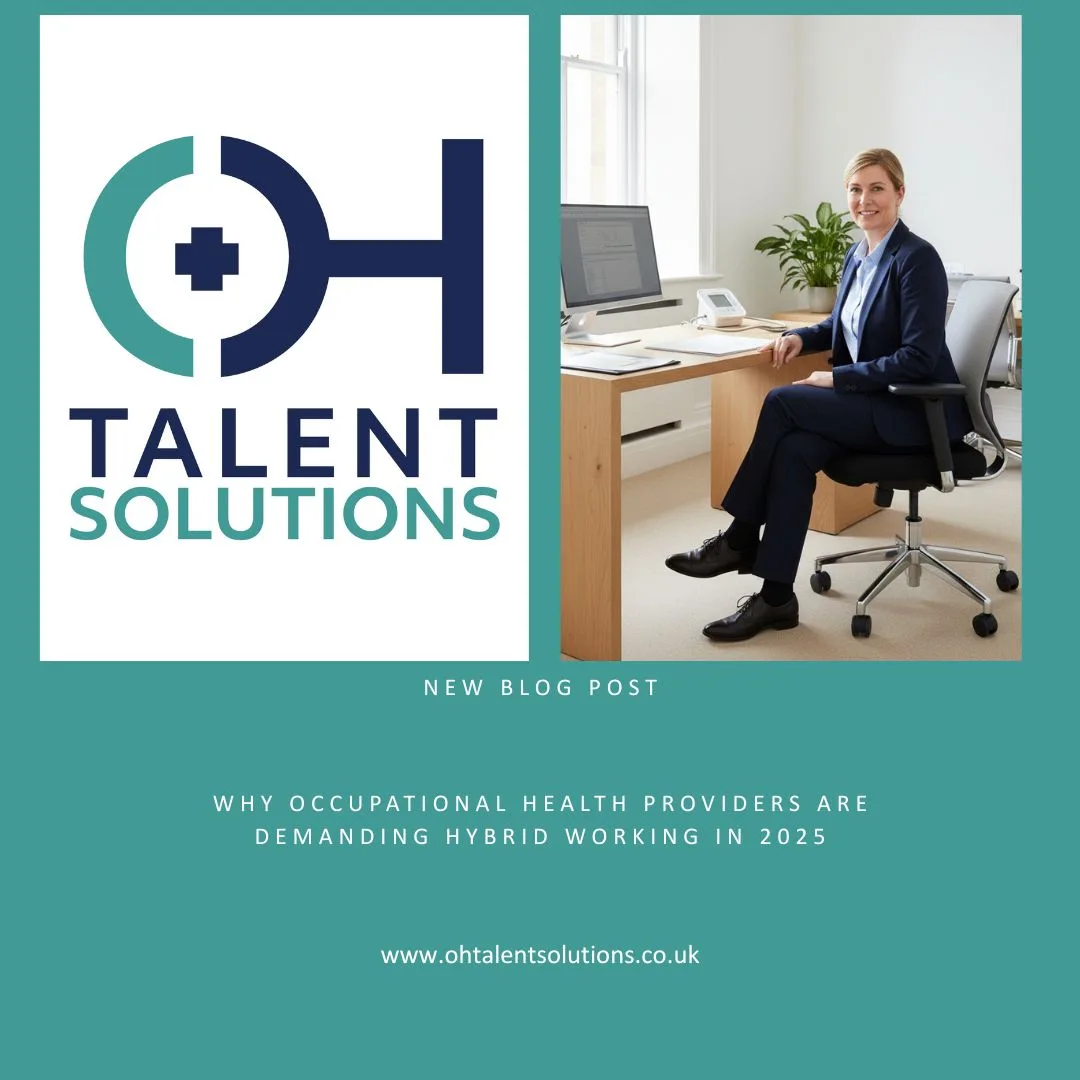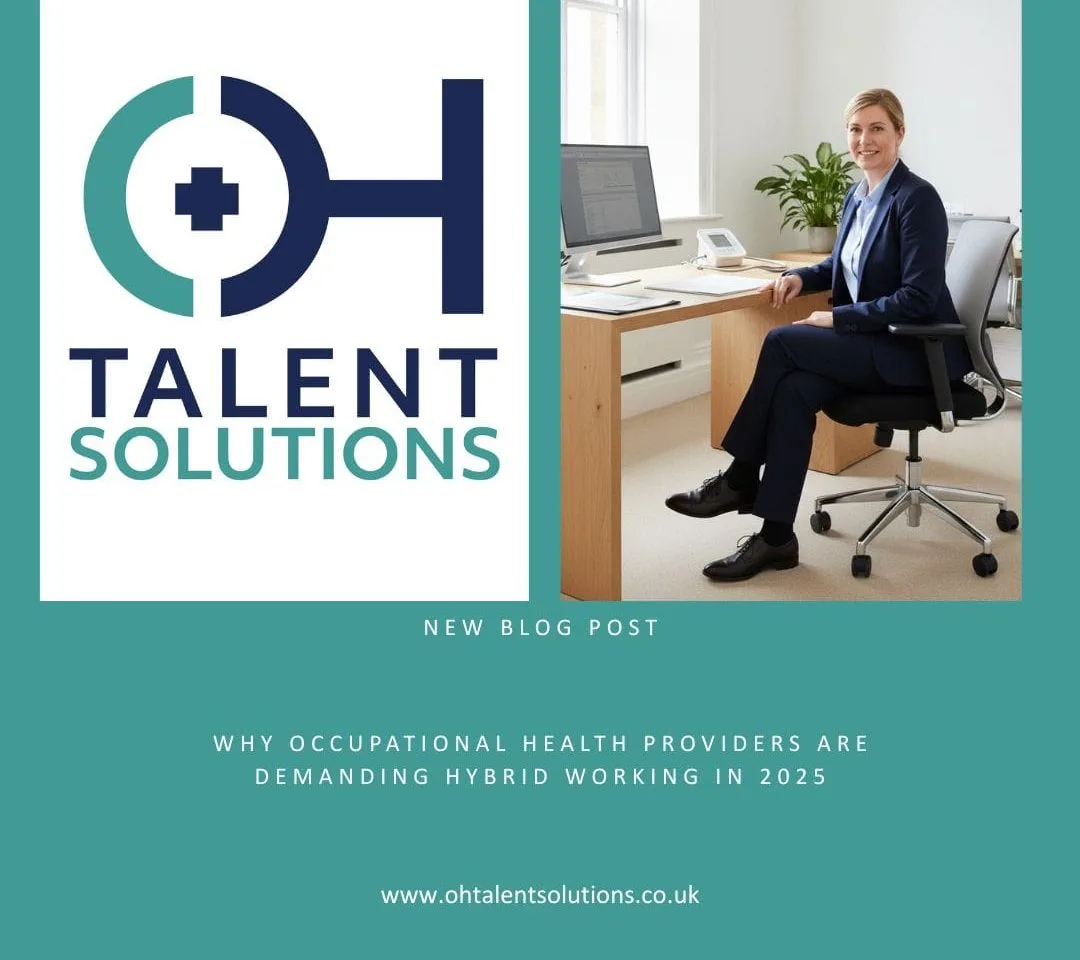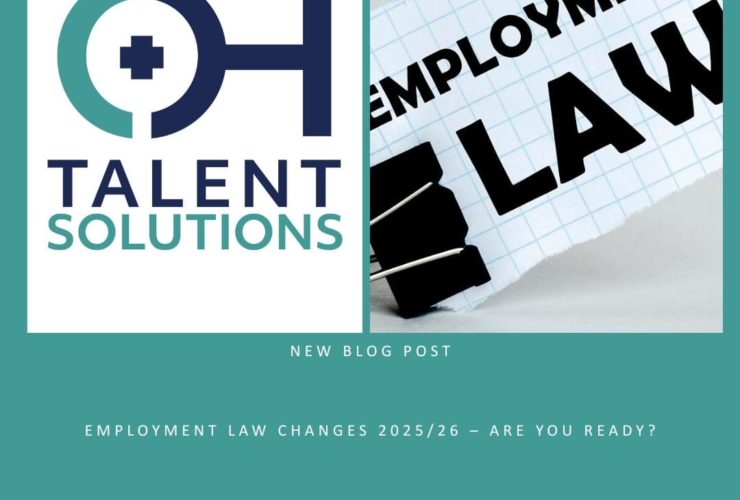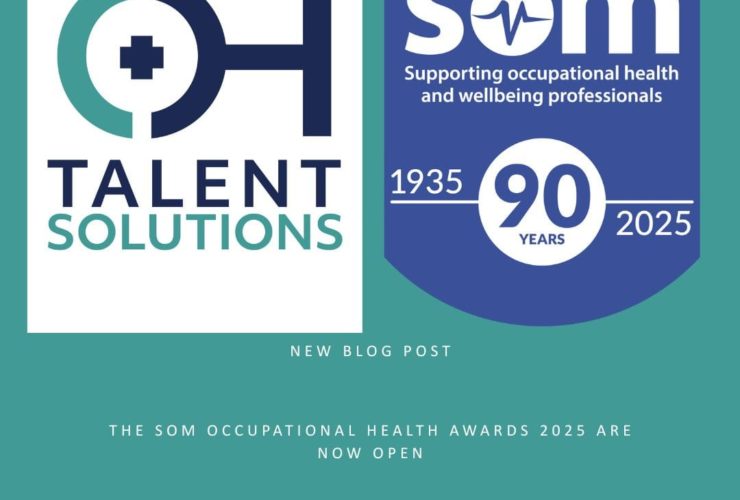IS IT The End of Fully Remote OH Roles: Why Providers Are Demanding Hybrid Working in 2025
Why Occupational Health Providers Are Demanding Hybrid Working in 2025
The occupational health sector is entering a new phase of workplace evolution. After several years of remote work following the COVID-19 pandemic, many occupational health (OH) providers across the UK are now insisting on hybrid arrangements rather than fully remote roles.
For OH advisors, nurses, and physicians seeking new positions in 2025, understanding this shift is crucial. Below, we explore why occupational health providers are demanding hybrid working in 2025, what’s driving the trend, and what it means for professionals in the field.
The Remote Working Boom During COVID-19
The pandemic changed occupational health delivery almost overnight. With workplaces closed and in-person consultations impossible, remote OH services became essential.
According to the Chartered Institute of Personnel and Development (CIPD), remote working surged across all sectors during 2020–2021, and occupational health adapted quickly to virtual consultations and telephone assessments.
Many professionals welcomed the benefits:
No commuting, saving hours each week
Better work-life balance and flexibility
Lower travel and clothing costs
Freedom to work with clients nationwide
However, as restrictions eased, OH providers began reassessing whether fully remote models truly supported quality service delivery.
Why OH Providers Are Moving Toward Hybrid Models
1. The Limitations of Remote-Only OH Assessments
While video and telephone consultations proved valuable during lockdowns, they can’t replace in-person evaluations for many cases.
Physical assessments remain vital for:
Musculoskeletal and neurological checks
Cardiovascular reviews
Ergonomic and workplace assessments
Fitness-to-work evaluations
The Faculty of Occupational Medicine (FOM) emphasises that remote consultations should supplement, not replace, in-person assessments when clinical accuracy matters.
2. Meeting Client Expectations and Service Standards
Employers purchasing OH services often expect visible, on-site engagement. Common requests include:
Health surveillance and wellbeing initiatives
Ergonomic assessments and management reviews
Pre-employment and return-to-work medicals
Research from the Society of Occupational Medicine (SOM) shows that client satisfaction rises when providers offer flexible, hybrid service models. Complex workplace cases, in particular, benefit from direct interaction.
3. Collaboration, Governance, and Quality Assurance
Fully remote work can make clinical collaboration harder.
Supervision: Junior advisors gain more from observing senior colleagues in person.
Team cohesion: The NHS Employers framework highlights that strong team environments uphold clinical standards and peer learning.
Quality assurance: In-person meetings allow richer discussion during audits, case reviews, and professional development sessions.
As a result, hybrid working better supports both clinical governance and staff growth.
4. Professional Development and Learning Opportunities
The Nursing and Midwifery Council (NMC) and General Medical Council (GMC) stress the importance of ongoing training and supervision. Yet many fully remote workers report:
Lower attendance at training
Reduced CPD engagement
Fewer informal learning moments
Feelings of professional isolation
Hybrid models enable richer professional development through shared learning and spontaneous collaboration.
5. Protecting Mental Health and Wellbeing
Occupational health professionals promote wellbeing for others—but remote isolation can affect their own.
The Mental Health Foundation notes that prolonged remote work can lead to:
Social isolation and loneliness
Difficulty switching off
Lower physical activity
Blurred work-life boundaries
Hybrid working supports mental wellbeing, maintaining flexibility while reintroducing human connection.
What Hybrid Working Looks Like in Occupational Health
Different providers adopt slightly different structures, including:
The 2–3 Day Model
Two to three days in clinic or office
Remaining days remote for reports and triage
In-person days reserved for assessments and team meetings
The Flexible Hybrid Model
Set “core days” in the office
Remaining days adapted to clinical demand
The Client-Led Model
On-site visits only when assessments are needed
Remote work for admin and case management
The Hub Model
Regular visits to a shared clinic hub
Outreach visits plus home-based admin
Each structure balances flexibility and face-to-face delivery differently, depending on the provider’s client base.
The Benefits of Hybrid Working for OH Professionals
While some professionals preferred fully remote work, hybrid arrangements offer long-term advantages.
Career Development
More supervision and mentorship
Broader professional networks
Greater visibility for promotions
Clinical Skills
Maintains physical examination competence
Broader case exposure
Hands-on workplace experience
Work-Life Balance
Flexibility without isolation
Clear separation between home and work
Social interaction and variety
Professional Credibility
Stronger client relationships
Broader service capability
Easier compliance with registration standards
Industry Perspectives: Hybrid as the New Normal
According to Personnel Today, hybrid working has become the “new normal” across UK industries. The occupational health field is no exception.
The Health and Safety Executive (HSE) advises that employers assess whether homeworking suits specific roles. For OH practitioners conducting clinical assessments, fully remote delivery is rarely appropriate.
What This Means for OH Job Seekers in 2025
If you’re exploring new roles in occupational health, keep these insights in mind:
Adjust expectations: Fully remote roles are declining. Embrace hybrid flexibility to stay competitive.
Showcase hybrid experience: Highlight success in both on-site and remote environments.
Recognise the benefits: Hybrid isn’t a compromise—it’s a balanced model supporting career growth.
Stay geographically realistic: Ensure you can commute occasionally to clinics or client sites.
Negotiate flexibility: Even hybrid roles can be adapted to suit your needs.
When Remote OH Roles Still Exist
A few positions remain fully remote, such as:
Telephone triage services
Advisory and policy roles
Specialist consultant positions
EAP counselling and report writing
However, these make up a small minority of OH vacancies in 2025.
The Future of Occupational Health Working Patterns
Experts such as The King’s Fund suggest that blended service models—combining digital and in-person care—are here to stay.
For OH providers, this means:
Investing in clinic infrastructure
Developing clear hybrid policies
Training teams for dual delivery modes
For professionals, it means:
Embracing hybrid flexibility
Maintaining clinical competencies
Prioritising wellbeing and collaboration
Conclusion: Embracing the Hybrid Future
The era of fully remote occupational health work is fading. As the sector matures, hybrid working in occupational health strikes the balance between flexibility and clinical excellence.
For professionals, it’s an opportunity to combine autonomy with connection, remote efficiency with hands-on practice, and personal wellbeing with professional growth.

Looking for hybrid occupational health roles in 2025?
OH Talent Solutions specialises in placing OH advisors, nurses, physicians, and managers in flexible, hybrid positions nationwide.
📞 Call 02393 871 484 or email info@ohtalentsolutions.co.uk
to find your next opportunity.




